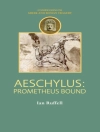We owe The Hound of the Baskervilles (1902) to Arthur Conan Doyles good friend Fletcher Bobbles Robinson, who took him to visit some scary English moors and prehistoric ruins, and told him marvelous local legends about escaped prisoners and a 17th-century aristocrat who fell afoul of the family dog. Doyle transmogrified the legend: generations ago, a hound of hell tore out the throat of devilish Hugo Baskerville on the moonlit moor. Poor, accursed Baskerville Hall now has another mysterious death: that of Sir Charles Baskerville. Could the culprit somehow be mixed up with secretive servant Barrymore, history-obsessed Dr. Frankland, butterfly-chasing Stapleton, or Selden, the Notting Hill murderer at large? Someones been signaling with candles from the mansions windows. Nor can supernatural forces be ruled out. Can Dr. Watson left alone by Sherlock Holmes to sleuth in fear for much of the novel save the next Baskerville, Sir Henry, from the hound’s fangs?
About the author
Sir Arthur Ignatius Conan Doyle, DL (22 May 1859 7 July 1930) was a Scottish author most noted for his stories about the detective Sherlock Holmes, which are generally considered a major innovation in the field of crime fiction, and the adventures of Professor Challenger. He was a prolific writer whose other works include science fiction stories, historical novels, plays and romances, poetry, and non-fiction. Conan was originally a given name, but Doyle used it as part of his surname in his later years.












